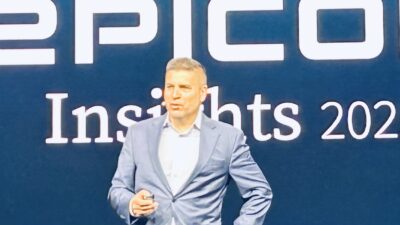New production methods, such as horizontal drilling, enabled the company extract more oil from its extensive reservoir of reserves in the Permian Basin of west Texas.
Energen, an oil and gas exploration and production company with headquarters in Birmingham, Ala., offers real-world example of the benefits that can flow from successfully integrating systems across an oil and gas enterprise.
When it embarked on its integration project, Energen was facing somewhat of a good-news, bad-news scenario. The good news was that new production methods, such as horizontal drilling, enabled the company to extract more oil from its extensive reservoir of reserves in the Permian Basin of west Texas. The bad news is that Energen’s information systems were not equipped to manage heavier production levels.
At the time, Energen was using two separate systems to capture field data; it had outgrown its production accounting system, and its regulatory reporting system was "broken," according to Connie Ellis, the company’s manager of production regulatory administration. In essence, it had become so difficult for field operators to pass information to engineering and management that no one felt confident in using whatever data they did receive to make business decisions. Energen addressed these issues by engaging with P2 Energy Solutions, a Houston-based company that offers a portfolio of software designed specifically to support upstream oil and gas operations. P2 also provides technology and services to help upstream oil and gas companies connect applications together to address their specific business needs, according to Ben Wilson, P2’s chief technology officer.
Energen replaced its legacy financial system with with P2’s Oil and Gas Accounting program, while also adopting P2’s solutions for field data capture, operational reporting, production accounting and authorization for expenditure (AFE) management and reporting. Two of those solutions—field data capture and AFE management—served to automate previously manual processes.
A number of these solutions required integration with other vendors’ products, and Wilson said P2 helped Energen forge those links. "P2 provides an open solution that eases integration with other solutions," Wilson said. "Energen has many (third-party) systems that are integrated with P2 solutions, including SCADA, document management, economics, marketing, procurement as well as cloud based industry solutions for joint interest billing and and production detail for partners and invoice management."
Energen also has adopted P2’s reporting system, which Wilson said uses a federated model to synchronize data from the various systems of record in response to user queries. He also said all links between various applications on the Energen network were made with standard application interfaces developed by either P2 or the vendors of the system to which P2 is connecting.
Regardless of how the links are forged, Ellis is pleased with the impact that the integration between P2 and these other solutions has had on Energen’s business.
"We are much more automated. It’s like stepping into the new millennium," she proclaimed. "We can feel confident that data is going to be there when we need it—and it’s going to be accurate. Engineers are now able to get accurate data about which wells are producing the most. Accurate volumes, means better decisions and increased production."
In the current environment, increased production—without added costs—is the ultimate goal for all oil and gas companies, and learning to successfully integrate applications across the enterprise appears to be the best way of achieving that goal. If you haven’t explored where EAI can fit into your enterprise, now is the time to start.



